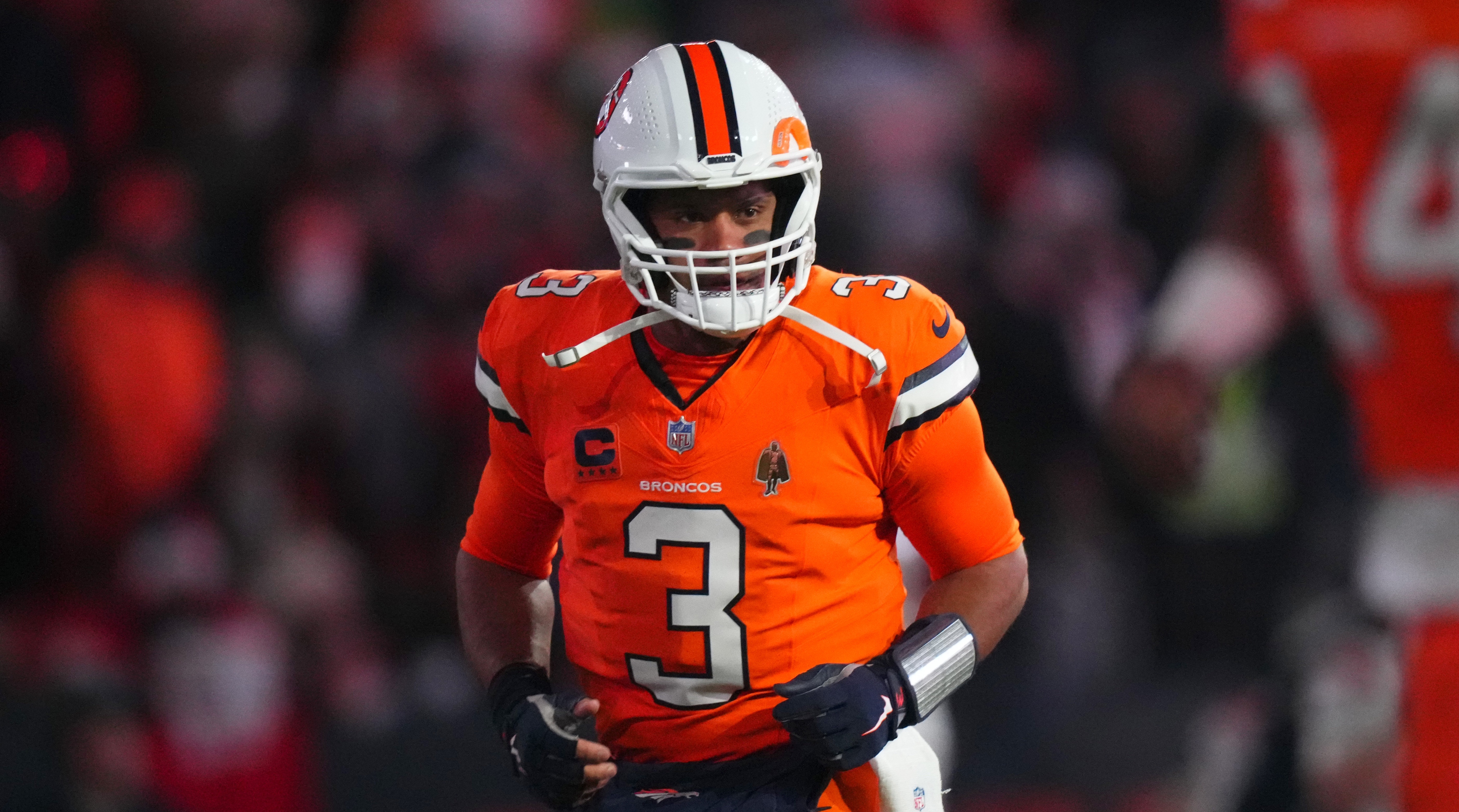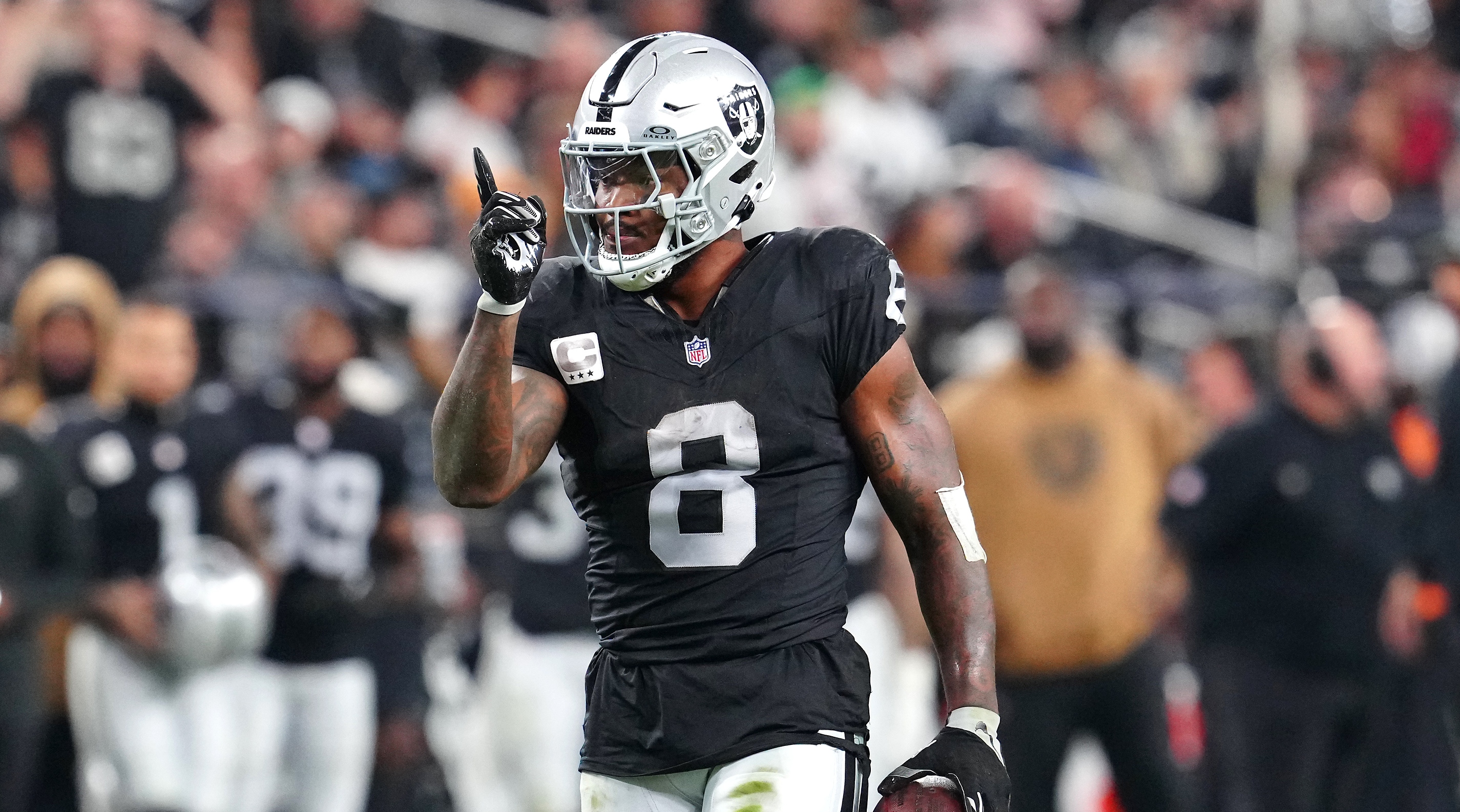2024 NFL Free Agency: 10 Most Likely Busts Include Calvin Ridley, Jonathan Greenard

With the 2024 free agency frenzy coming and going, let’s examine which newcomers might not play up to the high expectations that come from a lucrative contract.
Let’s focus on expectations more than performance. The teams that splurge in March tend to do it because of need and impatience—maybe one day the NFL will have the draft before free agency. But this offseason schedule benefits the veterans, and there’s nothing wrong with getting the bag from desperate and/or reckless teams.
Every new partnership starts with plenty of optimism, but many of the ones formed in free agency don’t work out. (It wasn’t hard finding 12 bad contracts from last free agency.)
Here are 10 free agents from this year’s frenzy who might not have a fruitful partnership with their respective new teams.
10. Russell Wilson, QB, Pittsburgh Steelers
I went back-and-forth on including Wilson on this list, because the Steelers are only paying him $1.2 million for a one-year contract, a massive bargain for a starting quarterback. But that’s the problem: The Steelers have reportedly made Wilson the starter this offseason, instead of making him compete with Justin Fields, whom the Steelers gained in a trade for only a conditional 2025 sixth-round pick, another bargain.

The Steelers added two quality signal-callers without needing to rebuild with a rookie quarterback—a blueprint other QB-needy teams without a high first-round pick should follow. But Pittsburgh would be wise to split the starting snaps between Wilson and Fields from the get-go. Wilson has struggled the past two seasons and probably won’t regain his form from his Seattle days. Fields has upside and could do wonders with the Steelers’ impressive roster. He could still win the job, but it’s all about timing, and taking over for a struggling squad in October doesn’t seem ideal.
9. Robert Hunt, OG, Carolina Panthers
Every young quarterback should have a bodyguard like Hunt, a rugged blocker in many aspects who doesn’t allow his signal-caller to take extra hits. Bryce Young will benefit from having Hunt in the middle of the Panthers’ offensive line. But the Panthers overpaid for his services, with a whopping five-year, $100 million contract with $63 million guaranteed.
With the lucrative contract, comes added pressure for Hunt, 27, who didn't make an All-Pro team nor a Pro Bowl during his first four seasons with the Miami Dolphins. Now Hunt will need to play like the best guard in the NFL to live up to this hefty contract. That’s a high bar, but the Panthers probably won’t care if Young excels in Year 2 and takes a lot fewer sacks than the 62 he had last season.
8. Tyron Smith, OT, New York Jets
The Jets benefited from Smith having a quiet market, adding him on a one-year, $6.5 million contract, which could go as high as $20 million. If Smith ends up making eight figures in 2024, that likely means he stayed healthy and was a quality left tackle for Aaron Rodgers. But Smith is entering his age-34 season and has dealt with many injuries throughout his decorated career. The last time he played a full season was in 2015.
If the Jets draft a tackle in the first two rounds, this signing would look a lot better next month. And maybe they would have been better off focusing on the draft because this class is loaded with tackles. But after the season the Jets had, there’s nothing wrong with a former All-Pro being on the team as insurance.
7. Saquon Barkley, RB, Philadelphia Eagles
The Eagles needed help on offense, not just on defense, which took the bulk of the blame for last year’s second-half collapse. Barkley’s versatility should help Jalen Hurts & Co., but it wouldn’t be surprising if Eagles beat reporters are writing stories about the team searching for ways to get Barkley more involved in the offense five games into the season.
Philadelphia signed Barkley to a three-year, $37.5 million contract, which puts him behind Christian McCaffrey, Alvin Kamara and Jonathan Taylor on the running back pay scale for 2024. It’s tough seeing Barkley, 27, playing as well as McCaffrey and Taylor. He’s dealt with injuries in his career and had a rough ’23 season, averaging only 3.9 yards per carry. Barkley hasn’t been as explosive as McCaffrey in a few years and isn’t as young as Taylor. He could be just as productive as Kamara, but Kamara hasn’t lived up to the contract extension he signed with the New Orleans Saints.
6. Patrick Queen, LB, Pittsburgh Steelers
Queen is a physical downhill linebacker who also excels in coverage. He fits a need and the play style of the Steelers. But signing Queen to a three-year, $41 million contract comes with a few risks. The 2020 first-round pick struggled his first three seasons with the Baltimore Ravens before enjoying a breakout ’23 season.
Queen, who didn’t have his fifth-year option exercised on his rookie deal, won’t get to play next to Roquan Smith in Pittsburgh. Coincidentally, Queen’s play picked up after gaining a rhythm next to Smith and getting the hang of Mike Macdonald’s defensive scheme. Perhaps Queen needed a few years to find his footing and could excel playing behind T.J. Watt and Alex Highsmith in Pittsburgh.

5. Josh Jacobs, RB, Green Bay Packers
Jacobs, the 2022 rushing champion, received a nice four-year, $48 million contract with plenty of money upfront—he’s set to make about $14 million this year. It’s essentially a year-to-year deal for the Packers, who could save $2 million in cap space by cutting Jacobs next year.
Both sides benefit from Jacobs receiving money that rivals what running backs made about four years ago. This move, however, doesn’t make sense from a personnel perspective and a budgeting standpoint. Jordan Love wasn’t in need of a workhorse back. The team could have paired AJ Dillon, who re-signed on a one-year, $2.7 million contract, with a rookie or another veteran running back without having to commit $14 million. The Packers are on the rise with Love and a handful of promising pass catchers. Now they need to find a way to get Jacobs heavily involved, possibly disrupting the chemistry from last season. Jacobs, 26, also has dealt with injuries in career, including missing four games last season.
4. Leonard Williams, IDL, Seattle Seahawks
Williams might have profited from the Seahawks spending a second-round pick to acquire him in a trade with the New York Giants and the team not wanting to lose him after half a season. The Seahawks doubled down and re-signed Williams to a three-year, $64.5 million contract.
That decision is a gamble because Williams is entering his age-30 season and his arrival didn’t help improve the Seahawks’ disappointing defense last season. Individually, Williams played well and could continue doing so with new coach Macdonald, the Ravens’ defensive coordinator the last two seasons. The Seahawks are banking on Macdonald improving a very expensive defense, which includes Williams and Dre’Mont Jones making over $17 million annually. The Jones signing didn’t lead to many positive results last season.
3. Jonathan Greenard, Edge, Minnesota Vikings
The Vikings could afford taking a chance on a young player with upside after the free-agency departures of Kirk Cousins and Danielle Hunter. But Greenard, who agreed to a four-year, $76 million contract, has only had one dominant season in his career, after recording a career-high 12.5 sacks for the Houston Texans last season. He only had 10.5 sacks combined in his first three seasons.
Texans coach DeMeco Ryans won’t be joining Greenard in Minnesota and neither will Will Anderson Jr., the reigning Defensive Rookie of the Year. Greenard, 26, will need to be the Vikings’ best player on the defensive front. He has also dealt with injuries, missing nine games in 2022. If Greenard plays up to his potential, perhaps this deal becomes a bargain for the Vikings.
2. Gabe Davis, WR, Jacksonville Jaguars
The free-agent addition of Davis might have looked better had the Jaguars re-signed Calvin Ridley, but even then they would have paid too much for a player because of a specific need. Davis is a terrific blocker with big-game ability, evident by his four touchdowns against the Chiefs in the postseason a few years back. But he’s had too many quiet games with the Buffalo Bills, which didn’t stick out as much because he still contributed as a blocker.
Now with Ridley gone, Davis can’t afford to have quiet games, and will be counted on to be the team’s No. 2 target behind Christian Kirk (who isn’t a legitimate No. 1 wide receiver). Davis signed a three-year, $39 million contract to head south with the Jaguars. The Bills signed Curtis Samuel to a three-year, $24 million contract to replace Davis.

1. Calvin Ridley, WR, Tennessee Titans
Ridley left Trevor Lawrence and the Jaguars to be the No. 1 wide receiver for Will Levis and the Titans. There’s nothing wrong with the team adding a dynamic wide receiver to help a second-year quarterback, but they might regret this contract in a year or two.
Ridley, who turns 30 later this year, signed a massive four-year, $92 million contract with the Titans—it’s understandable why the Jaguars didn’t match that price. For that contract, Ridley comes with too many concerns, including age, availability and performance. He played in every game for the Jaguars last season, something he did only once in five seasons with the Falcons. But Ridley struggled to learn Doug Pederson’s offense and had a few costly drops with the Jaguars. Perhaps playing with new Titans coach Brian Callahan will make the Ridley signing worth the risks.
